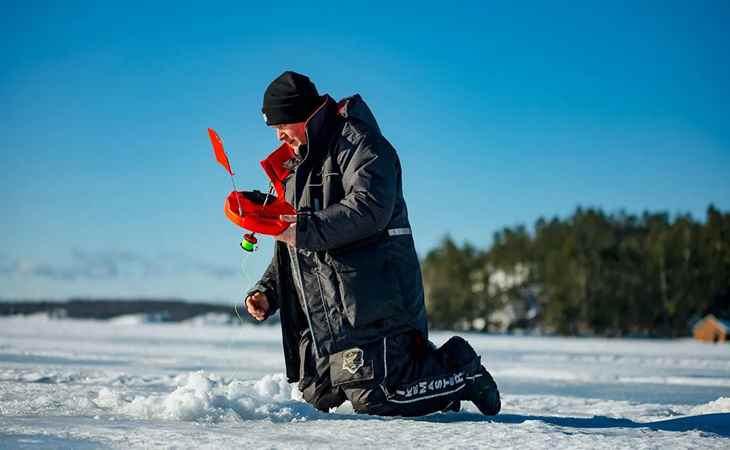Ice Fishing Line
Choose the perfect ice fishing line for sub-zero conditions. Explore our durable and reliable selection, designed to handle the challenges of icy waters. Invest in quality lines that guarantee optimal performance in cold temperatures.

Showing 1–12 of 43 results
- $12.18 Select options This product has multiple variants. The options may be chosen on the product page
- Price range: $26.49 through $65.09 Select options This product has multiple variants. The options may be chosen on the product page
- $12.18 Select options This product has multiple variants. The options may be chosen on the product page
- Price range: $8.19 through $14.39 Select options This product has multiple variants. The options may be chosen on the product page
- 8 Fishing Line Fishing Tool Fishing Accessories Strongest Fishing Wire Pe Fishing Wire Fishing Parts$8.29 Select options This product has multiple variants. The options may be chosen on the product page
- Price range: $7.06 through $16.69 Select options This product has multiple variants. The options may be chosen on the product page
- Price range: $18.39 through $24.99 Select options This product has multiple variants. The options may be chosen on the product page
- Price range: $10.19 through $20.09 Select options This product has multiple variants. The options may be chosen on the product page
Showing 1–12 of 43 results
Unveiling the Secrets of Selecting the Ideal Ice Fishing Line: A Comprehensive Guide
Introduction
Welcome to the icy realm of ice fishing, where choosing the right line is as crucial as the hole you drill. This guide is designed to help you navigate the frozen waters and select an ice fishing line that will not just suffice but excel in extreme conditions. The right line can make the difference between a successful catch and a fish tale about the one that got away.
Understanding the Importance of Selecting the Right Ice Fishing Line
Ice fishing requires gear that withstands the harsh environment. The line must combat freezing temperatures, resist snapping under pressure, and provide sensitivity to detect subtle bites. It’s a delicate balance of strength and finesse, ensuring your line remains invisible to the fish yet strong enough to pull up your catch.
Benefits of Using High-Quality Ice Fishing Lines
Investing in high-quality ice fishing lines means investing in your success on the ice. Superior lines offer better handling, reduced memory effect, and increased durability. They improve your chances of catching fish and provide peace of mind that your gear won’t fail when you need it most.
Factors to Consider When Choosing an Ice Fishing Line
Material and Durability
The material of your fishing line affects its performance. Each type has unique properties that can either enhance or hinder your ice fishing experience. Understanding these characteristics is key to making an informed decision.
Strength and Abrasion Resistance
Strength is non-negotiable. Your line should hold up against the sharp edges of ice and the fight of a catch. Abrasion resistance ensures your line survives contact with ice and underwater structures.
Flexibility in Cold Conditions
A line that becomes stiff in cold weather can be challenging to handle and might break easily. Look for lines that maintain flexibility even when the mercury dips, allowing for smooth casting and retrieval.
Diameter and Visibility
The thickness of your line influences everything from how well fish can see it to how it behaves in water. A thinner line is less visible and can lead to more strikes but may be less strong.
Impact on Fish Behavior
Fish are often line-shy in clear icy waters. A line with a smaller diameter is less likely to spook them, increasing your chances of a bite.
Ease of Detection in Snowy Environments
While thin lines are good for tricking fish, they’re also harder to see above the surface, especially in snowy conditions. Choose a color that stands out against the white backdrop for better visibility.
Line Memory and Manageability
Line memory refers to the line’s tendency to retain coils after being spooled. This can lead to tangles and affect casting distance and precision.
Effect on Casting Distance and Accuracy
A low-memory line will lay straighter, allowing for longer and more accurate casts. This is essential when targeting a specific area beneath the ice.
Handling in Sub-Zero Temperatures
The manageability of a line in cold weather is critical. It should be supple enough to handle knots and resist becoming brittle in low temperatures.
Types of Ice Fishing Lines
Monofilament Lines
Monofilament lines are popular due to their affordability and ease of use. They are forgiving and stretch under pressure, which can be beneficial when fighting a fish.
Advantages and Disadvantages
The advantages of monofilament include its stretchiness and forgiveness, but it can suffer in terms of sensitivity and can absorb water, leading to freezing.
Fluorocarbon Lines
Fluorocarbon lines boast near invisibility underwater, making them ideal for clear water conditions often found in ice fishing.
Key Features and Considerations
These lines have little stretch, offering excellent sensitivity. However, they can be stiffer and more difficult to manage, especially in colder conditions.
Braided Lines
Braided lines are known for their exceptional strength and sensitivity, often preferred by seasoned ice anglers seeking to feel every nibble.
Durability and Sensitivity Comparison
Compared to other types, braided lines offer superior durability and sensitivity but lack stretch, which can lead to lost fish if not handled correctly.
Specialized Features for Ice Fishing Lines
Low-Temperature Performance Enhancements
Some lines are specifically designed to perform in extreme cold with additives that keep them flexible and strong despite the chill.
Resistance to Freezing
Lines treated for cold resistance are less likely to absorb water, reducing the chance of freezing and maintaining performance.
Flexibility in Extreme Cold
Even in the bitter cold, a line should remain pliable. Enhanced flexibility at low temperatures helps prevent breakage and maintains ease of use.
Ice-Specific Coatings
Coatings can make a significant difference in ice fishing lines, providing advantages like reduced ice buildup and improved durability.
Reduction of Ice Build-Up
Lines with special coatings repel water and reduce ice accumulation, keeping your line clean and functional throughout your fishing session.
Enhanced Sensitivity
Coatings can also improve a line’s sensitivity, allowing anglers to feel the lightest bites and react quickly to hook a fish.



















